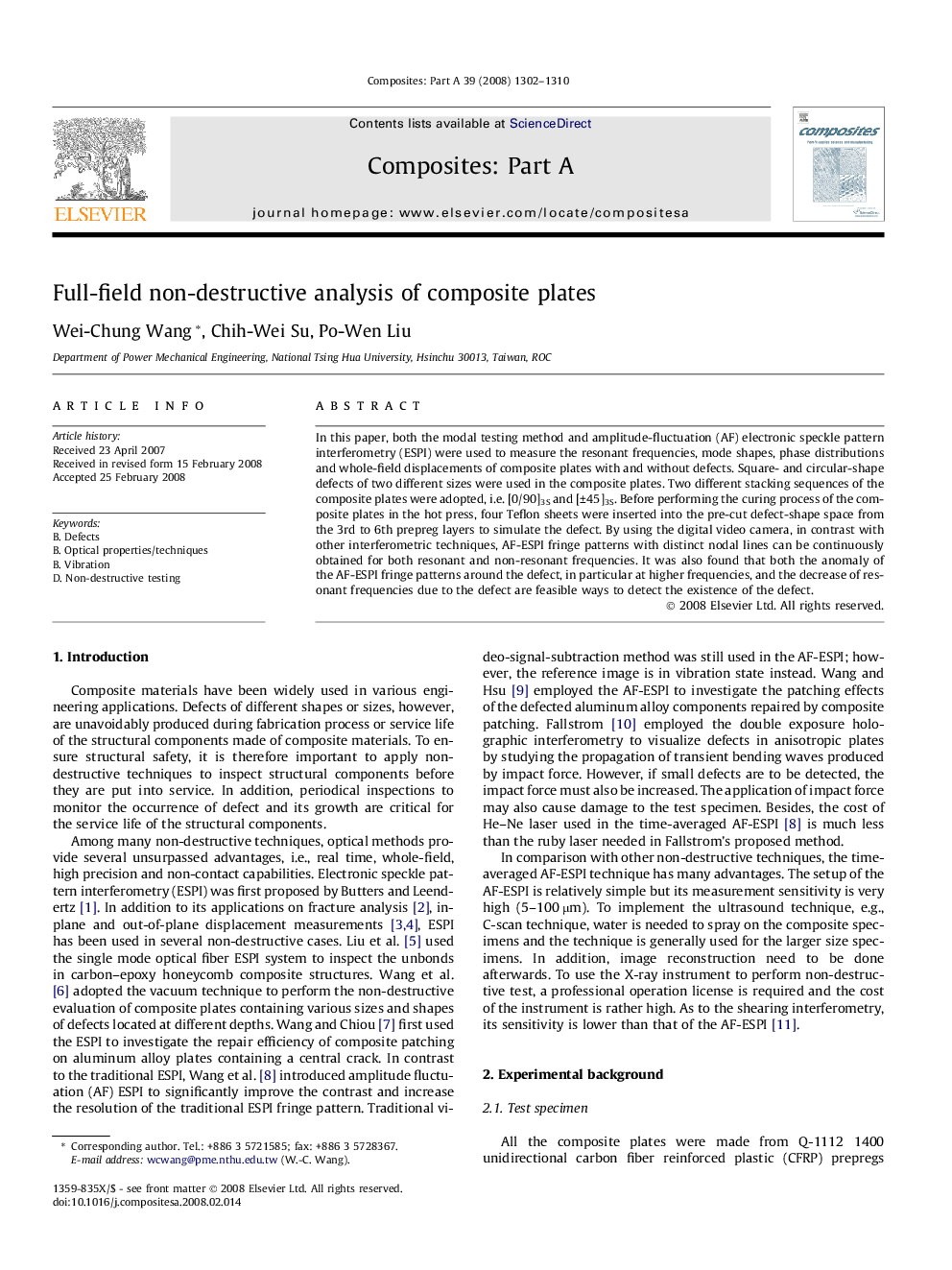| Article ID | Journal | Published Year | Pages | File Type |
|---|---|---|---|---|
| 1467370 | Composites Part A: Applied Science and Manufacturing | 2008 | 9 Pages |
In this paper, both the modal testing method and amplitude-fluctuation (AF) electronic speckle pattern interferometry (ESPI) were used to measure the resonant frequencies, mode shapes, phase distributions and whole-field displacements of composite plates with and without defects. Square- and circular-shape defects of two different sizes were used in the composite plates. Two different stacking sequences of the composite plates were adopted, i.e. [0/90]3S and [±45]3S. Before performing the curing process of the composite plates in the hot press, four Teflon sheets were inserted into the pre-cut defect-shape space from the 3rd to 6th prepreg layers to simulate the defect. By using the digital video camera, in contrast with other interferometric techniques, AF-ESPI fringe patterns with distinct nodal lines can be continuously obtained for both resonant and non-resonant frequencies. It was also found that both the anomaly of the AF-ESPI fringe patterns around the defect, in particular at higher frequencies, and the decrease of resonant frequencies due to the defect are feasible ways to detect the existence of the defect.
